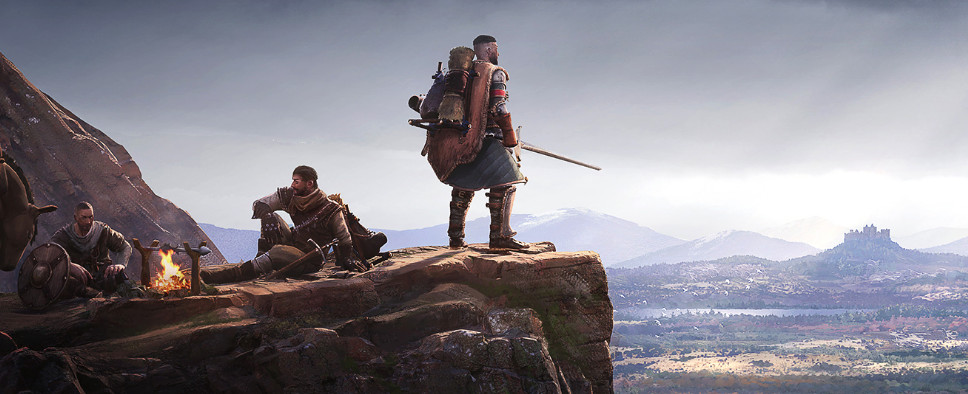Wartales - The Art of Wartales
-
Category: News ArchiveHits: 3240

The latest developer blog Q&A for Shiro Games' upcoming mercenary RPG Wartales focuses on the game's visual style and artistic inspirations. So, if you'd like to know more about the game's looks, and its UI, you should check this out:
What are the influences for the global art style of wartales?
The universe of Wartales is set in a medieval fantasy universe which draws its inspiration from medieval Europe, spanning an artistic period going from the 5th to the 14th century. The general philosophy is to offer credible environments and characters for fans of medievalism, while maintaining a somewhat original aspect.
Wartales' graphic universe is therefore influenced as much by a naturalistic and documentary approach as by artists with very dark and melancholic fantasy universes such as Arthur Rackham or John Howe.
What was the inspiration for the environment?
As said in the previous Q&A the environments of Wartales are very strongly inspired by Scotland and the north of England.
To be more specific this is the inspiration for the core of the world story, the Edoran empire. Edoran is inspired by the Roman/Celtic culture, and Wales is the real life location where this civilization existed. But Wartales is not a medieval documentary so we have mixed this core inspiration with a lot of other European cultures and different eras. The world of Wartales will be composed of many specific biomes that will reflect on the various local cultures. For example The empire of Edoran is based on Wales but Harag kingdom is more based on the Scottish highland and Belerion on Iceland. So as you travel you will see some changes in the landscape.
What was the inspiration for the architecture?
Much like the landscapes, the architecture reflects the people. So most of the buildings reflect the style of the Edoran empire, with stone walls and red tiles for the roof.
There is also this ancient and mysterious civilization that has left many ruins and secrets that are influenced by a mix of ancient culture like the Greek and the Mesopotamians. But the core inspiration for this are the romantic ruins and the Piranese prisons.
What was the inspiration for the characters?
The characters of Wartales are nomadic adventurers and their designs are therefore representative of their function. Most of them wear bags, warm clothes and capes to face the harsh climate and nature. They are also warriors so their outfits are optimized for combat. The characters represented in the band are both female and male and all have very athletic builds to match their extreme lifestyle.
For the proportions and the faces we were very much inspired by MMA wrestlers for both women and men. The outfits themselves draw their inspiration from various periods and cultures of the Middle Age going roughly from the late Roman empire to early Renaissance. You will find outfits with some Celtic inspirations as well as Gothic armor for the more sophisticated. The main idea was to take various existing pieces of armors and do some mashup with them.
The NPC’s designs were also influenced by middle age outfits but we have made sure that they were really different from the trained warriors. They are more simple and reflect their sedentary lifestyle and their jobs.
What was the inspiration for the weapons?
Wartales weapons are largely based on real weapons such as can be found in European museums. We will thus find falchions, corbin beaks, fauchards etc. However, especially for the most powerful weapons, one can find uniquely designed equipment made by legendary blacksmiths as well as ancient weapons, hidden deep in the dark ruins. But still, at least in part, inspired by existing weapons in the real world.
Can you talk a bit about the UI?
Wartales is a game where the user interface is quite present with various tables rich in texts and figures as well as many written dialogues. The style is therefore sober with fairly legible typographies and slightly typed like garamond for example. The iconography work is also very important with different levels of more or less diegetic stylizations, depending on whether it is skills that will be illustrative or simple logos that will be much more stylized and functional. The UI will of course largely evolve during the Early Access.

